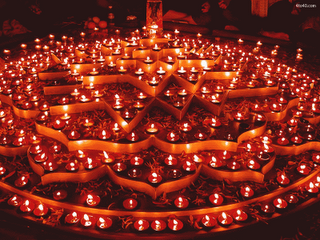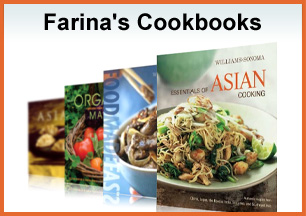Celebrating Deepawali: The Festival of Lights
One of the joys of living as an ex-pat in Singapore is that my family and I get to learn about and experience the holidays of Southeast Asia that we most likely would never have been aware of. Deepavali was one of those holidays.
Deepawali is one of the biggest festivals of India. It marks the beginning of the Hindu New Year in the Lunar calendar and represents the victory of goodness over evil, light over darkness. Literally translated as “Row of Lamps”, it is also commonly called the festival of lights. You may hear of the festival by many names (depending on the region and language of India) – including: Depavali, Dipavali, Dewali, Diwali, Divali, Depotsavi and Dipapratipad.
Of course, much of my interest with any holiday is the food involved with its celebration. Diwali is a festival of crackers and sweets. Days before the festival, the females of the family start preparing traditional delicacies for family and friends. Marketplaces are decorated with lights and shops are overflowing with sweets, fireworks and other goods. Temples are cleaned and painted while statues of Gods are adorned with new clothes and jewelry. Sweets, kheer (Indian rice or milk pudding) and batashe (a kind of egg-less meringues made in various shapes of animals and toys) are distributed to family, friends and workers.
On Diwali itself, there is a custom to exchange sweets to the friends and neighbors – that’s why Diwali can’t even be imagined without sweets and savories that are specially made at home. From north to south, east to west in India, several mouth-watering delights are prepared in various manners depending upon the prevailing custom and taste of the family members.
Every family makes their own favorite meal in the evening. In many Indian homes, it can consist of dishes such as rasedar aloo (potato curry with gravy, new vegetables of the season like cauliflower , sweet pumpkin, mooli-ka-lachha (grated white radish with salt and lemon dressing), poori, and urad dal kachoris.
For the sweet portion, there are lots of options – including: Gulab Jamon (fried milk balls in sweet syrup commonly served as dessert in U.S. Indian restaurants), Kulfi (Indian ice cream) and Kheer (Indian pudding). One of my favorites is Badam Halwa (an almond confection) that comes from an Indian friend of mine here who says she loves to prepare this for her family during Deepavali. To follow is that recipe.
Badam Halwa – Almond
Ingredients:
1 cup raw almonds
1 cup whole or lowfat milk
3 tablespoons ghee (clarified butter)
1/4 cup sugar
pinch of a salt
1/8 teaspoon cardamom powder
5 to 6 saffron threads
3/4 cup water
1 tablespoon toasted slivered almonds
Directions:
Soak the almonds in warm water for 3 to 4 hours, or until the almond pops out of the skin when squeezed. Remove all the almonds skins and use a blender to grind the almonds with the milk until until a thick paste forms.
In a medium non-stick pan over medium low heat, melt the ghee and add the almond puree. Stir the mixture slowly until it begins to thicken, 7 to 10 minutes. It will tend to stick to the bottom of the pan, so keep stirring. Add the sugar, ground cardamom and saffron to the almond mixture and stir well. Continue to cook over low heat for another 10 to 15 minutes or until the mixture turns golden brown and comes together into a single mass.
Serve warm in small bowls garnished with toasted almonds.





